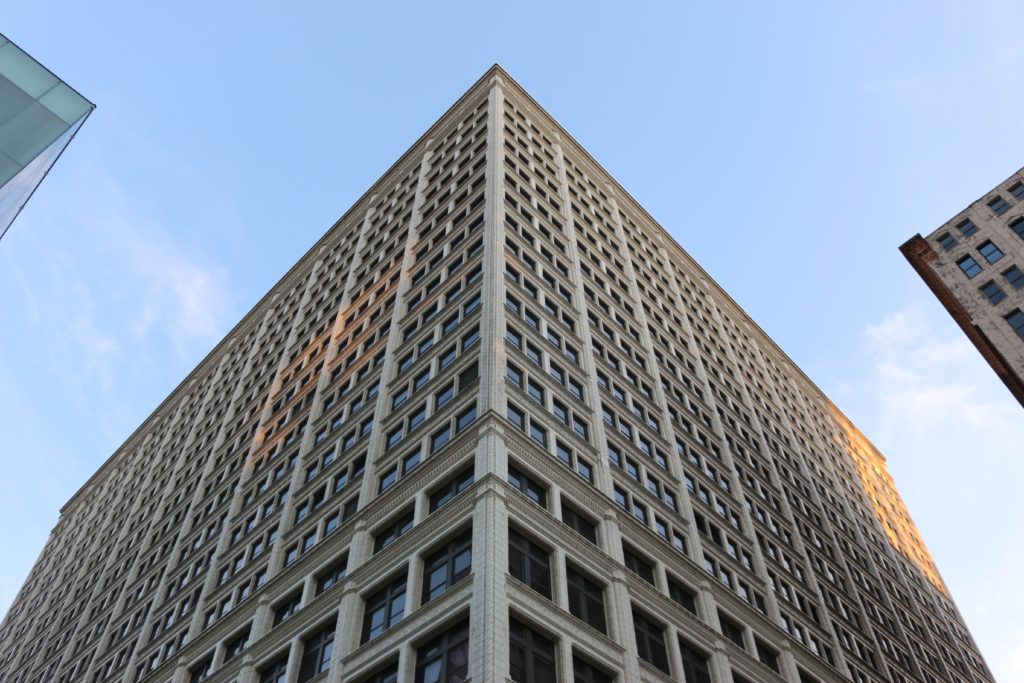At its November 21 meeting, the city’s Industrial Development Authority will consider issuing $160 million in Housing Revenue Bonds to help finance redevelopment of the vacant Railway Exchange Building downtown. Total renovation costs are expected to top $250 million. Hudson Holdings purchased the property early this year for $20.5 million. Plans for the building include a large residential component with The addition of retail and office space. Early projections put the number of apartments at 600. Founded in 2006, Hudson Holdings has taken on several large projects, including redevelopment of Cincinnati’s Textile Building, Cleveland’s Union Trust (Huntington) Building, Louisville’s Starks Building and Kansas City’s Mark Twain Building.
The Railway Exchange Building was built in 1914 to a design by architects Mauran, Russell & Crowell. The Chicago School tower was the city’s largest and tallest when completed and today remains the second largest building downtown at 1.2 million square feet. The Railway Exchange was the long-time headquarters of May Department Stores Company before May was bought out by Federated Department Stores in 2005 and subsumed into Macy’s the following year. The building is best known as home to the flagship location of department store Famous-Barr. Converted to a Macy’s in 2006, the chain closed the downtown store in 2013.
Local governments sell Housing Revenue Bonds when a developer plans to set aside 40% of residential units for moderate- to low-income renters. In this case, the city’s Industrial Development Authority will sell the bonds. Hudson Holdings received a $19.3 million bridge loan in March from Gamma Real Estate to fund pre-construction activity. Last year Hudson Partner Avi Greenbaum told NextStl that the project would not be possible without the availability of historic tax credits.
The clock may be ticking on the state and federal historic tax credit programs. Combined, they can cover up to 45% of eligible redevelopment costs. The United States Senate has proposed cutting the federal credit from 20 to 10 percent, while the US House has proposed ending the program altogether. Missouri’s historic tax credit program also is threatened, with Governor Greitens seeking major changes to the program. Between 2002 and 2015, historic tax credits have enabled more than $3.2 billion in development in St. Louis City alone. St. Louis has led the nation in benefiting from the program.


